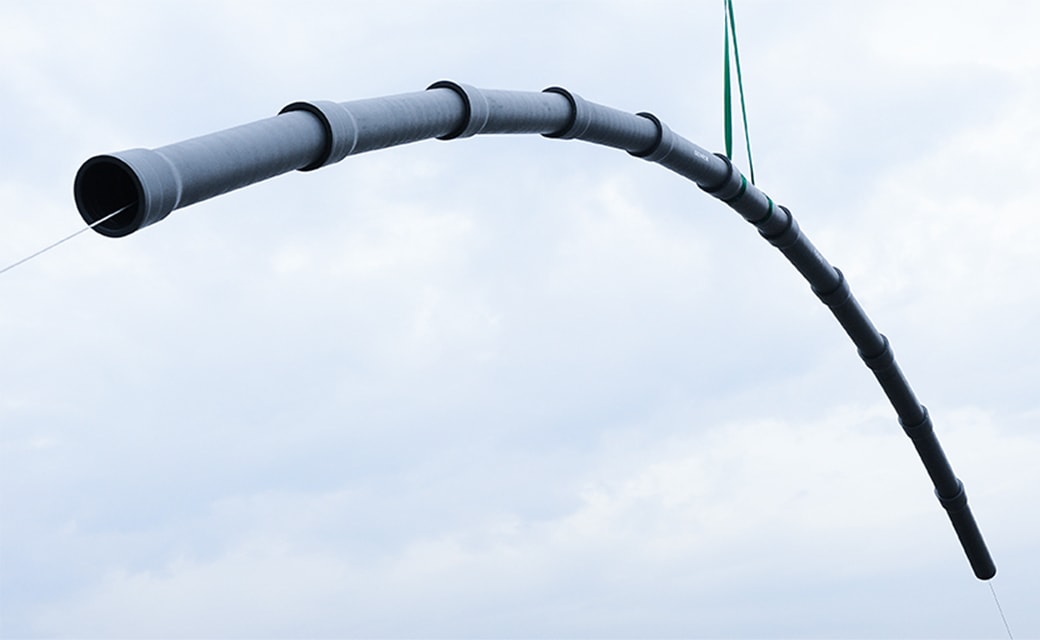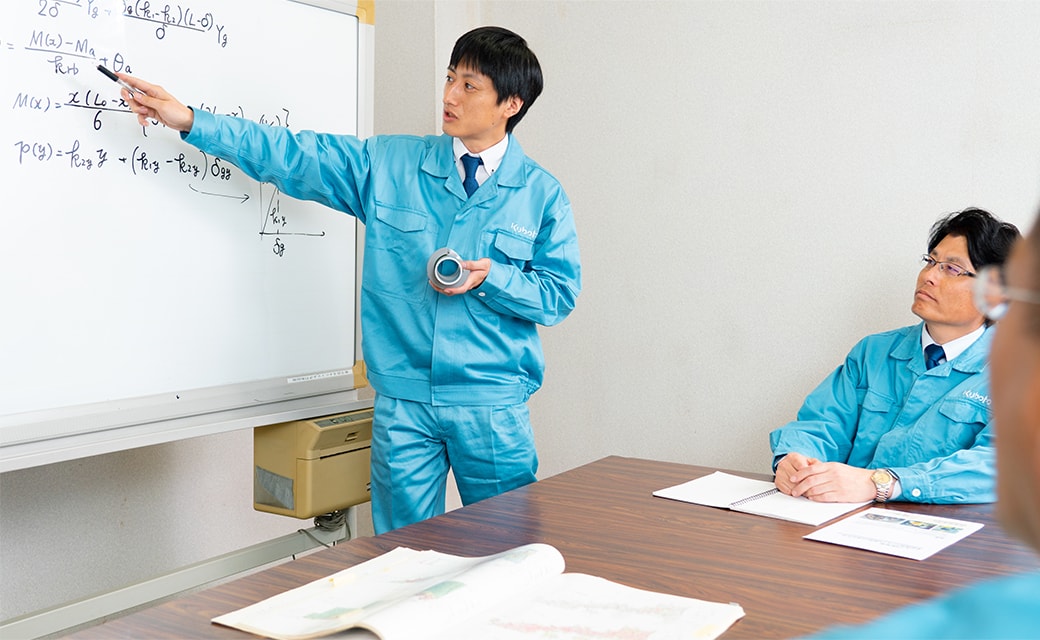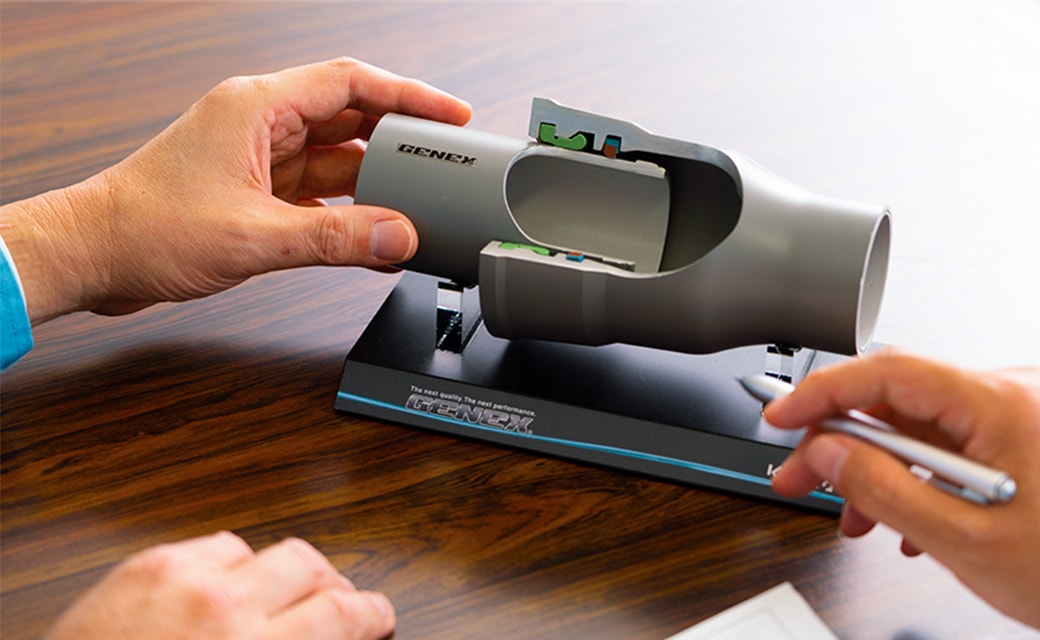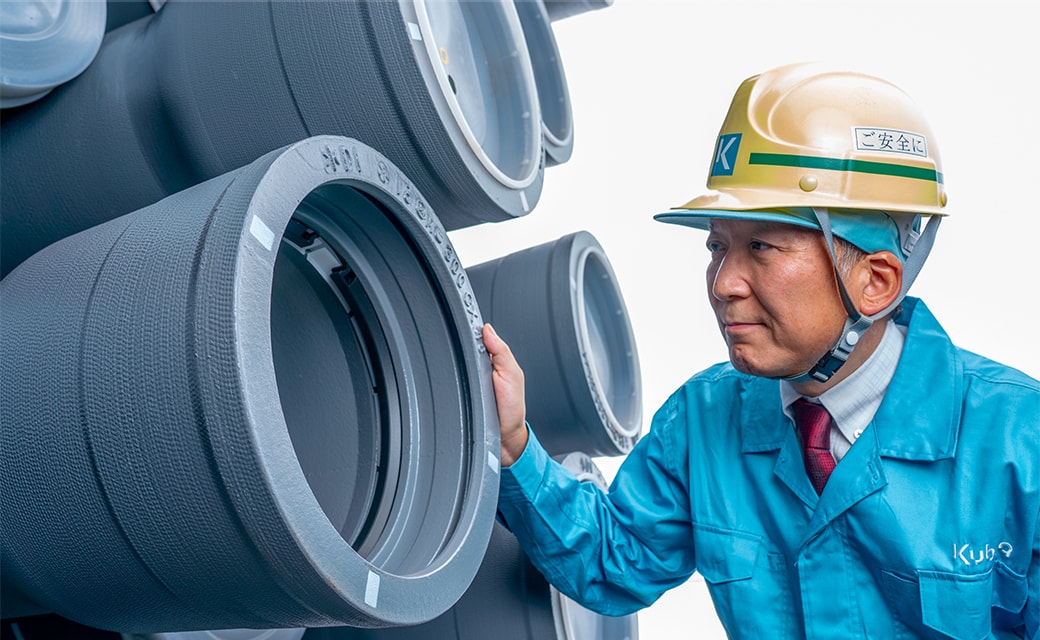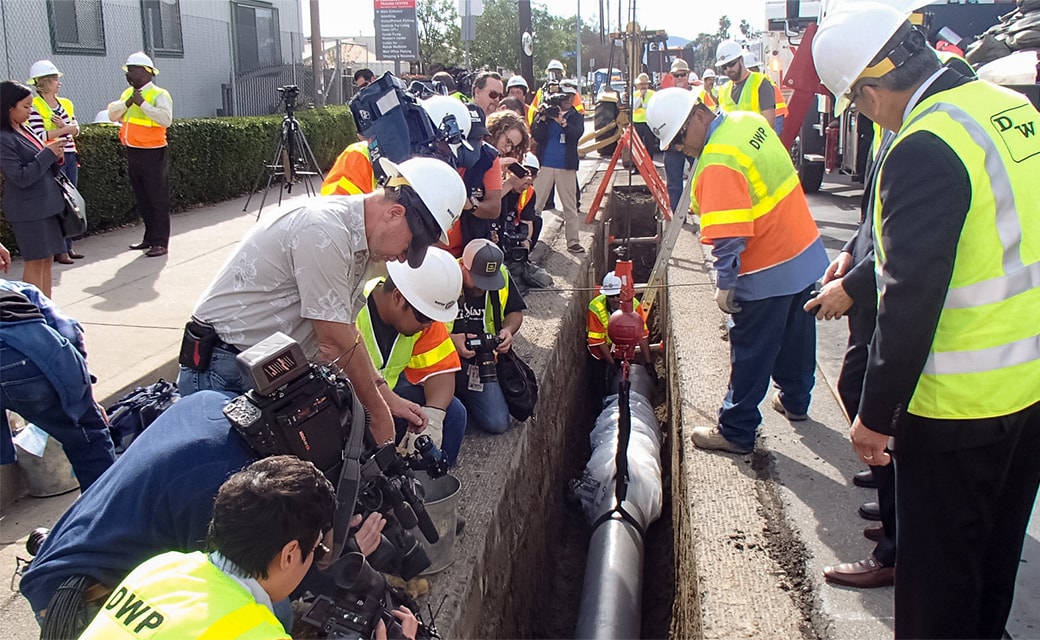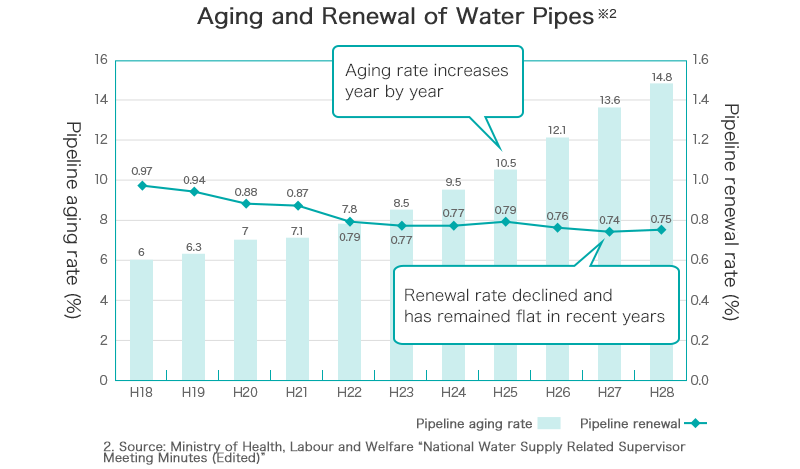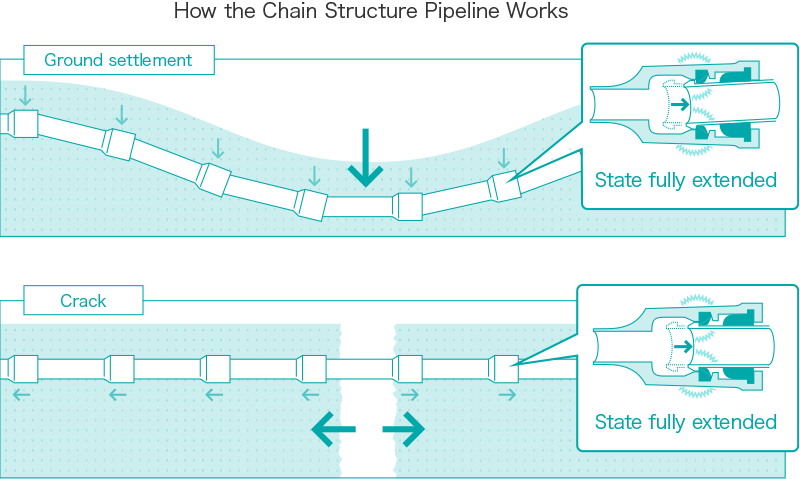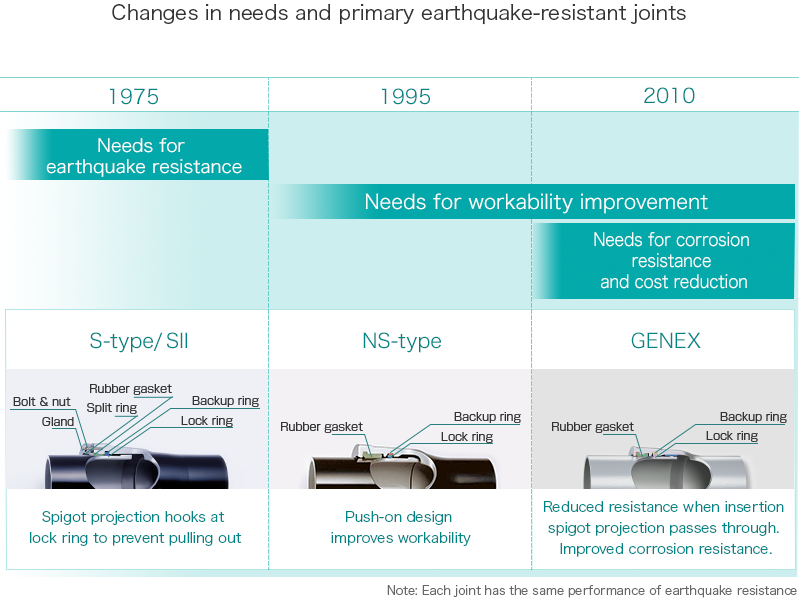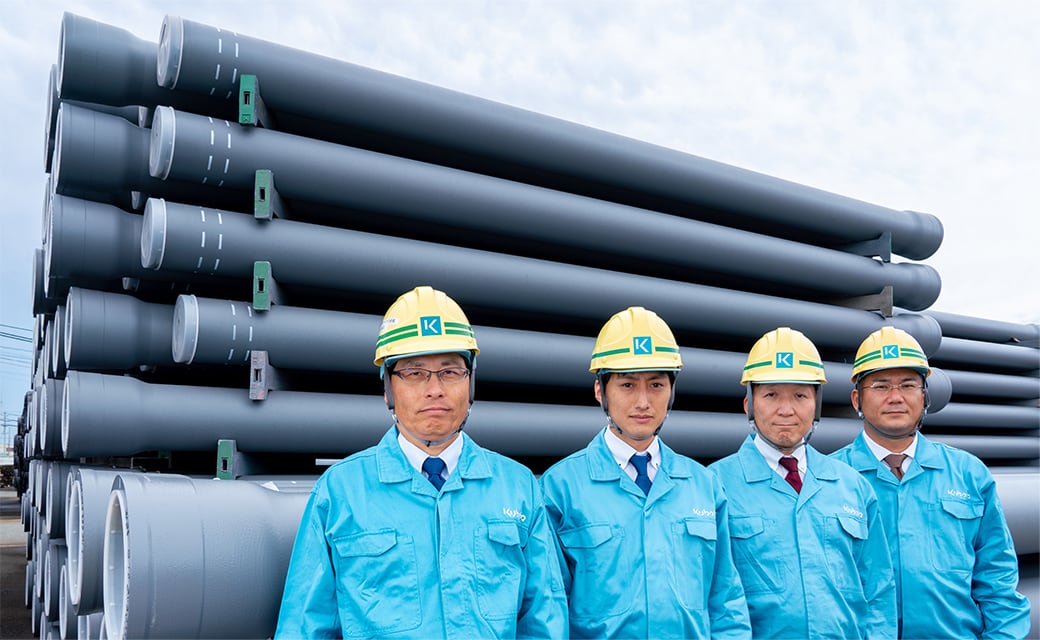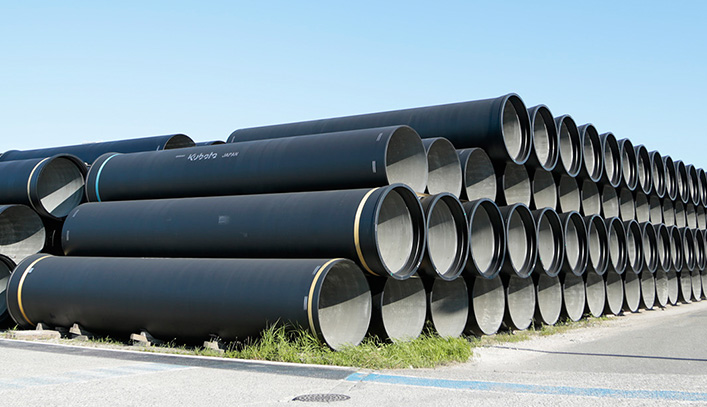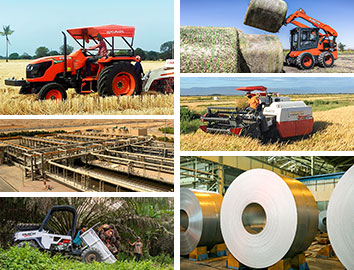Kubota’s Earthquake-Resistant Ductile Iron Pipes ProtectInfrastructure From Disasters
Earthquake-resistant Ductile Iron Pipes
Around the 1870s, all water pipes used in Japan were imported from other countries. Gonshiro Kubota, the founder of Kubota, witnessed the outbreak of cholera and other water-borne infectious diseases, and in 1893 the company began producing the first domestic cast iron water pipes. This established Kubota’s position as Japan’s leading manufacturer of iron pipes. Since then, in response to the changing needs of the times, Kubota has continued to lead the industry in development of durable materials, coupling joints and construction methods. In recent years, Kubota has completed the GENEX (next-generation) earthquake-resistant ductile iron pipes for water pipelines with outstanding long-term durability. Here are some of the water pipeline technologies from Kubota that have truly worked underground to support Japan’s water infrastructure.
Japan’s water infrastructure today and its challenges
The coverage of water supply in Japan is about 98% (as of 2017)1, but most of this consists of water pipelines laid during the period of high economic growth. Renewal of the aging pipes that have exceeded their 40-year legal lifespan has already become an urgent issue. On the other hand, due to stagnant revenues from water services, the national pipeline renewal rate is currently only about 0.7% per year. That is why Japan’s Ministry of Health, Labour and Welfare, which has jurisdiction over water services, has made the renewal and seismic resistance of water pipes its top priority, and is working toward its goal of 100% earthquake resistance for main pipelines.
- 1. Source: Ministry of Health, Labour and Welfare “Water Supply System Coverage Rate”
The origin of the S-type earthquake-resistant joint that can withstand large-scale ground deformation
Today, ductile iron pipes make up roughly 60%3 of pipe material for potable water in Japan. Earthquake-resistant ductile iron pipes have proven their outstanding performance numerous earthquakes without damage. The origin behind the development of the S-type joint, the first of these earthquake-resistant joints (the mechanisms for connecting pipe), was the 1964 Niigata earthquake, which registered a magnitude of 7.5. Kubota engineers, witnessing the extensive damage to pipelines by earthquakes, fully realized the need for water pipelines that could withstand tremors, and began searching for ways to develop earthquake-resistant joints.
Soon after, the 1968 Tokachi-oki earthquake occurred, this time with a magnitude of 8.3. The water department of Hachinohe City, Aomori Prefecture made an urgent request for the development of an earthquake-resistant joint that would not slip out of place, could bend in all directions, and would not leak. This was the push that launched the full-scale effort to develop such joints.
Taking into consideration factors such as estimated range of ground strain, amount of expansion/contraction, allowable deflection, and pullout resistance the engineers conducted interviews with Japan Society of Civil Engineers members and specialist university professors in order to determine the baseline criteria.
As a result of this, the engineers developed an original self-anchoring flexible mechanism that provides a certain amount of clearance in the pipe joint portion allowing it to extend, contract and deflect, and keeping it from pulling out if the pipe moves beyond the joint’s range of motion. This resulted in pipelines with dramatically improved adaptability to ground movements that could withstand major ground deformation. Because the joints work like a chain, so that each one can move without the whole system falling apart, the engineers gave it the name “chain structure pipeline.” And this structure was inherited by GENEX, one of Kubota’s main products today.
Of course, the manufacturing department at the time was said to have faced numerous difficulties and obstacles in the process of creating the world’s first earthquake-resistant pipes.
- 3: Source: Japan Water Works Association "2014 Statistics on Water Supply"
-
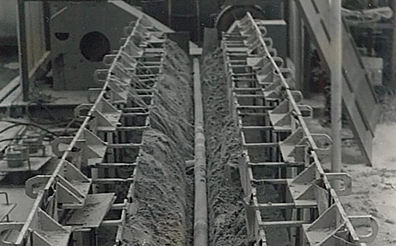
The engineers came up with a device to predict ground deformation and conducted performance experiments under various conditions.
-
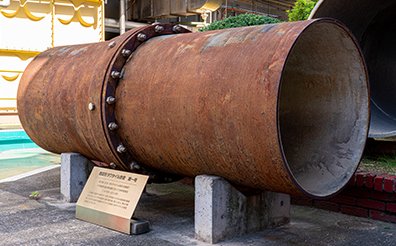
This earthquake-resistant ductile iron pipe (S-type, 1000 mm) used by the Hachinohe City waterworks was the first of its kind adopted in Japan.
Earthquake-resistant joints evolve to meet changing needs
Earthquake-resistant joints and construction methods will continue to advance in response to new demands
For example, after the SII-type for use in small-diameter applications, the NS-type, the first push-on type earthquake-resistant joint, was developed in 1994. This joint can simply be pushed on and does not require bolts or nuts at the jointing areas, giving it excellent workability. This succeeded in reducing the total cost of materials, construction and other expenses compared to conventional jointing methods, in which workers had to go down into trenches and joint the pipes with nuts and bolts. This led to a greater proliferation of earthquake-resistant pipes.
The fact that nearly 60% of the water pipelines currently in use in Japan (including plastic pipes) are made from Kubota Group materials is a testimony to the company’s achievements.
Developing GENEX, the pipes with an expected for 100 years of durability
In 2010, one year before the Great East Japan Earthquake, Kubota succeeded in its long-awaited development of GENEX, a new earthquake-resistant ductile iron pipe. GENEX is the latest model that carries on the earthquake-resistant performance of S-type pipes with outstanding workability and an expected lifespan of 100 years. Behind this project was the growing need from waterworks departments for earthquake-resistant pipelines that could last a long time.
Kubota spent dozens of years collecting more than 3,000 soil samples from pipe installation sites nationwide, along with valuable data analyzing the corrosion rate of iron pipes. In order to ensure a long lifespan, the most challenging aspect of water pipes, Kubota engineers made a “nationwide map of soil environments” based on this data. They quantified degrees of corrosion in underground environments covering about 95% of Japan’s national area excluding mountainous regions, and through a series of accelerating tests using actual pipes they compiled external corrosion specifications that could provide an expected 100 years of use.
The actual construction involves the formation of a corrosion-resistant layer using a sealing treatment formed by melting and spraying a wire-shaped zinc-based alloy on the outer surface of the iron pipe. Even if iron portions become partially exposed, the self-healing mechanism in the corrosion-resistant layer can maintain the pipe’s anti-corrosion performance.
This method offers a dramatic improvement in workability over the conventional method, in which a thin film called a polyethylene sleeve is used to cover the iron pipe where it is buried. Plus, the new method eliminates concern about shorter pipe lifespans resulting from damage during burial, making it an unprecedented development. This achievement demonstrates the “ductile iron pipe R&D spirit” handed down from Kubota’s founder, as well as the sense of pride and responsibility that Kubota feels in contributing to the construction of Japan’s water supply system as the leading manufacturer of ductile iron pipes.
-
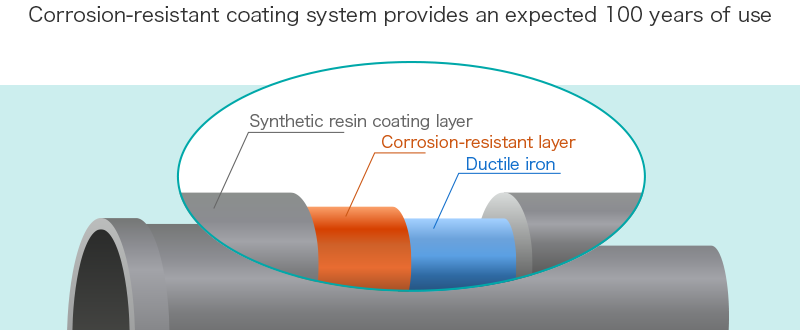
-
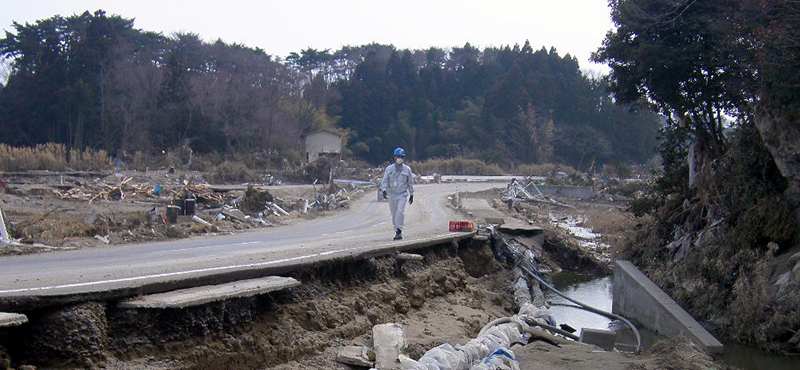
- An engineer assesses the damage to pipelines in a disaster-afflicted area and collects data.
Taking Japan’s earthquake-resistant ductile iron pipes to the world
The Kobe Earthquake of 1995 brought renewed attention to the importance of earthquake-resistant pipelines, leading to an even greater spread of earthquake-resistant pipes throughout Japan. The ratio of earthquake-resistant pipes among all ductile iron pipes rose from around 80% the year after the launch of GENEX to around 95% in 2017.
These earthquake-resistant pipes were adopted on a trial basis in Los Angeles, U.S. in 2012. The Los Angeles Department of Water and Power took note of the pipes’ track record of resisting damage during the Kobe and East Japan earthquakes. The first overseas project using GENEX was around several hundred meters in length, but Kubota engineers provided full-scale support from pipe design to on-site supervision of jointing work during installation. This has led to a steady increase in the use of Kubota earthquake-resistant ductile iron pipes along the U.S. West Coast, a region that experiences frequent earthquakes.
-
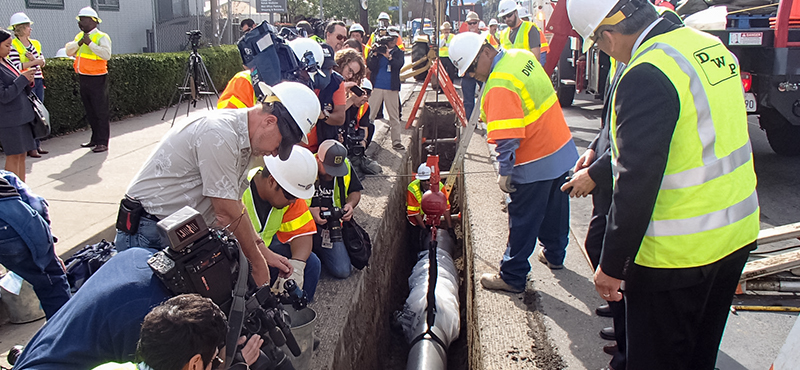
- GENEX trial installation in Los Angeles.
